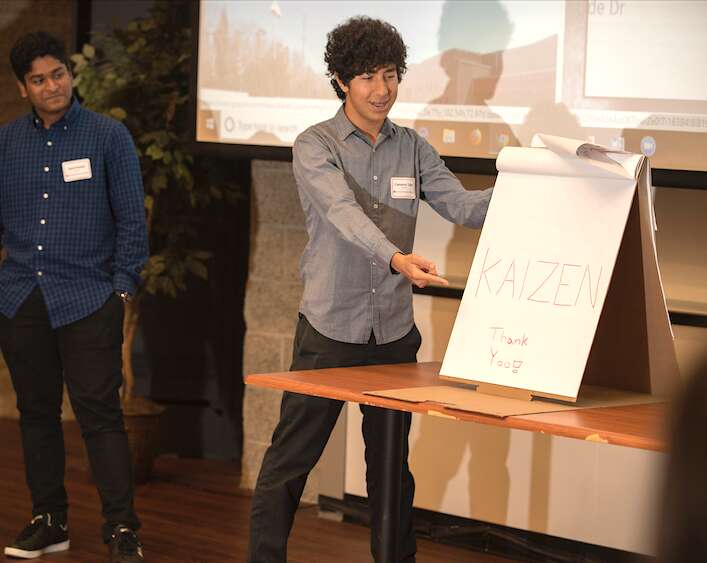Kaizen Challenge creates a STEM path into college … and beyond

Have you heard of the company Graffiti Genesis? Cerebral Society? No? How about R & E Recycling?
You probably haven’t—all of these are the recent creations of several high school student teams competing in the Kaizen Challenge, a problem-solving activity designed to increase teen exposure to various technologies to pique their interest and pave the way to a future STEM-related career.
Powered by the Toyota USA Foundation, this springs Challenge involved approximately 150 students from the Chaffey Joint Union High School District tackling big problems—pollution, mental health, graffiti, hunger/food conversation, public safety—with their local communities in mind. “Kaizen” is a Japanese word meaning “continuous improvement”—which is central to Toyota’s business philosophy.
After working on their team projects with teachers at their schools, the teams converged on the CGU campus to showcase their projects and present the process and outcomes behind their concepts to a group of guest judges.
Eddie Partida, one of the Challenge’s key organizers and the director of the university’s Teacher Education Program, described the Challenge as an ideal way to spark more interest in the areas of Science, Technology, Engineering, and Mathematics, known collectively as STEM.
“There’s a significant shortage in the number of qualified math and science teachers in low-income schools, and that affects the number of students in those schools who get interested in a STEM major or a future career,” Partida explained. “This Challenge is a really unique approach that inspires these students and brings together some of the best STEM educators in our area.”

Partida, who has also served as the long-time STEM Coordinator for the university’s Teacher Education program, said that the Toyota USA Foundation has provided critical seed-funding support to his program to grow the Challenge in the years ahead.
The Kaizen Challenge brought together CGU’s faculty in the School of Educational Studies with STEM faculty from the Claremont Colleges and outstanding Inland Empire math and science teachers. Together, these educators created and ran workshops and seminars over the past year to guide student teams from the district, which consists of some 12 schools serving Ontario, Montclair, Rancho Cucamonga, and several other communities.
The workshops were specifically aimed at solving local problems—something that the Kaizen Challenge casts as a “probletunity” (the kind of opportunity that arises in fixing a particular problem).

Some teams tackled the challenge of helping foster children to succeed or supporting the mental health of teens and other young adults. Others aimed at boosting pedestrian safety by petitioning city governments to install sidewalks in high-traffic areas, developing a better system of recycling that will also educate the public, or responding to illegal graffiti by painting over them with murals as a way of transforming public spaces into works of art.
The goal of the Challenge was not only to come up with a good idea but also to develop a practical plan, including the scientific methodology, technological support, and a budget of calculated costs.
For students Ghadia Ilham, Yasamin Rahemi, and Alma Zapata, their project presented a method of collecting food that would otherwise be thrown away and redistributing it to the needy via designated food pantries. That would reduce the amount of food that gets thrown away even though it is readily consumable because of imposed limits on its use.

Rancho Cucamonga-based project R & E Recycling focused its project on the act of recycling as well as educating the public. During their presentation, the students explained that they wanted to help people better understand what recycling really is rather than making an educated guess about what can be recycled (something the student team called “wish cycling”).
As another student team—who addressed ways to support and guide foster kids to a brighter future—said at the conclusion of their presentation, “our end goal is to make a small dent in a big problem.”
Partida said the Challenge’s inaugural year was a success, and he and his Challenge colleagues are already planning for next year.